Graham Phantom B-44 Tonearm: Like A 2.2 On Steroids

DarqueKnight
Posts: 6,765
Introduction
I decided to step up my analog game a little bit. Based on what I'd read from other Graham 2.2 tonearm owners who upgraded to the Phantom, and an audio press review or two, I was not expecting a "revelatory" experience. I did find the Phantom to be an excellent evolutionary advancement in every respect. The Phantom sounds like a 2.2 on (low dosage) steroids.
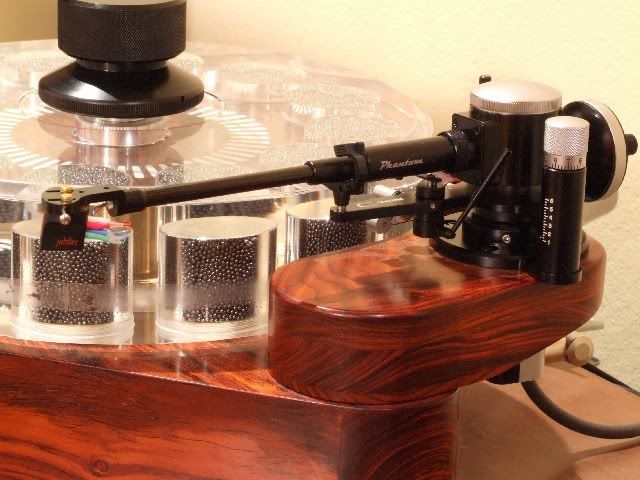
Figure 1. The Phantom is a higher definition descendant of the 2.2.
Construction
The Phantom (bearing assembly + tonearm) weighs 2.5 pounds, which is 0.6 pounds heavier than the 2.2. The Phantom uses a "Magneglide" stabilization system which prevents any unipivot wobble. It feels as solid as any gimbaled tonearm. Set up took an hour and twenty minutes, inclusive of reading the manual instructions and experimenting with damping fluid level in the bearing. The Phantom is supposed to be a "drop-in" upgrade for the 2.2 and there were no problems.
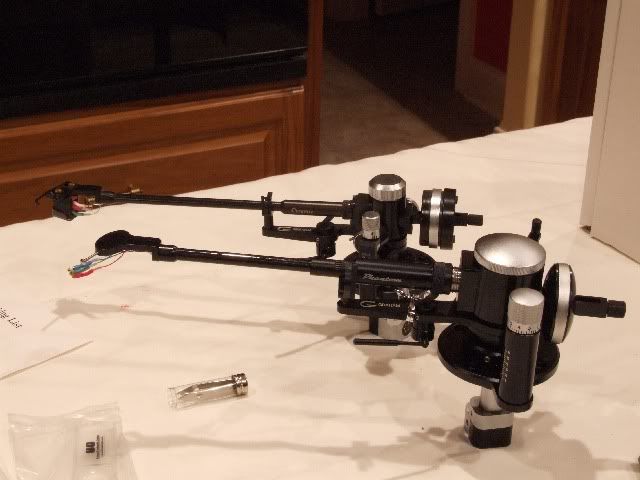
Figure 2. Side-by-side comparison of the Phantom and the 2.2.
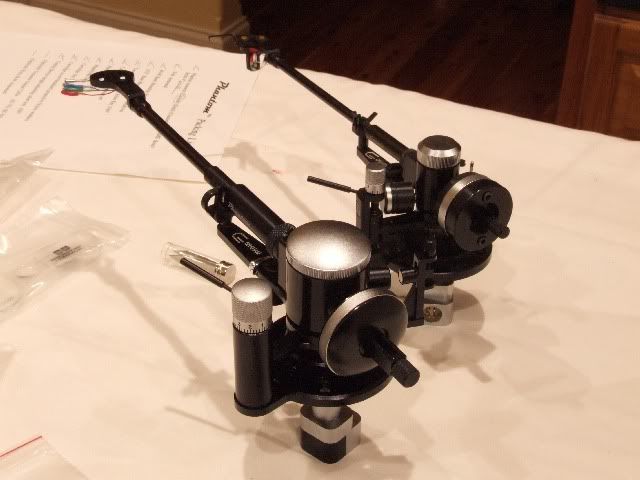
Figure 3. Rear view of the Phantom and the 2.2.
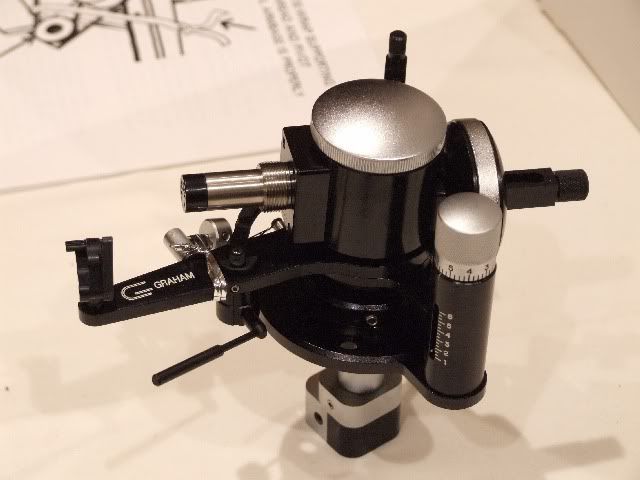
Figure 4. Phantom bearing assembly.
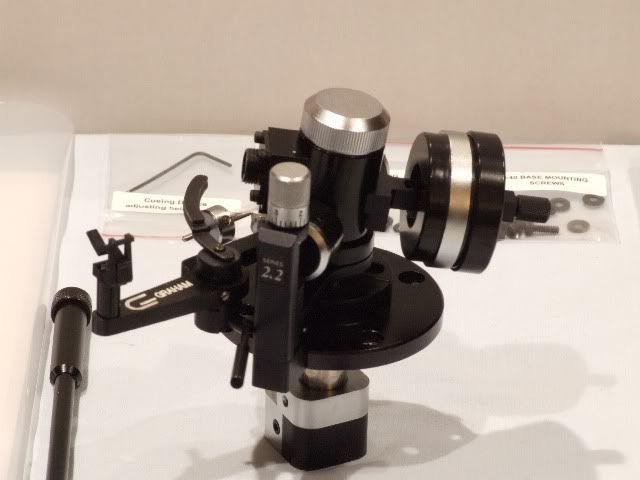
Figure 5. 2.2 bearing assembly.
In September of 2006, Version 2 of the Phantom was introduced. Version 2 offered the improved bearing and bearing cap shown in figure 6. Previous Phantoms can be retrofitted with the new bearing at a cost of $250. Graham claims (and users who have upgraded confirm) that the new bearing adds more mechanical stability to the arm and produces significant improvements in sound stage depth, image weight, and overall definition and clarity. I'll just have to take their word about the degree of improvement since my Phantom is a version 2.
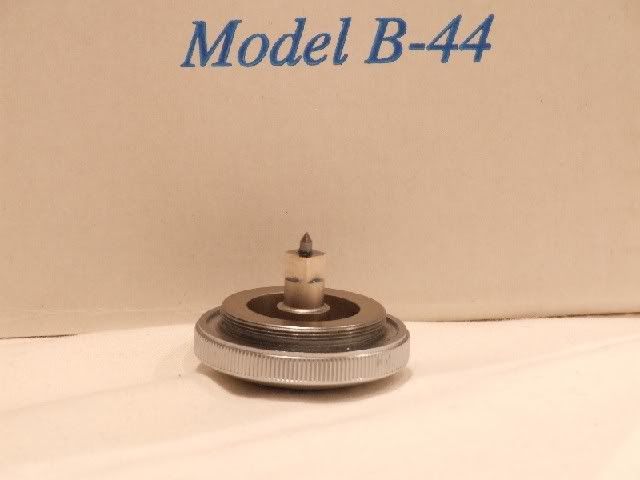
Figure 6. Version 2 Phantom bearing and cap.
The Sound
The moment the music started playing, I knew that I had done a very good thing by moving to the Phantom. One of the main criticisms of the 2.2 was that it was deficient in bass compared to some other high performance tonearms. I was never dissatisfied with the 2.2's bass performance, but then, I am not a hard core analog enthusiast, so a lot of stuff probably slips by me.:)
The first thing I noticed was deeper bass. The Phantom did not add another low octave. Rather, it gave a better representation of what the 2.2 offered. The bass of the Phantom was fuller, richer, more articulate, more tactile, and more detailed.
Whereas the bass performance of the Phantom was significantly better than the 2.2. Midrange and high frequency detail was also noticeably improved, but not to the extent of the bass.
The Phantom was significantly more holographic than the 2.2 with more image weight, more apparent space between images front to back, and a more quiet background. Sound stage width was the same as the 2.2. The Phantom projected some images 1 or 2 feet forward of their 2.2 positions, while other images were projected 1 or 2 feet back from their 2.2 positions.
Conclusion
The diminishing returns demon didn't rear its ugly head in this case. On my system, the improvements in bass performance, imaging, and sound staging more than justified the Phantom's cost premium over the 2.2. Some 2.2 owners have been hesitant to upgrade because of the Phantom's $4300 MSRP. However, this is only 26.5% more ($900) than the $3400 MSRP of the 2.2 Deluxe. Of course, the diligent and prudent shopper can always find new and used prices significantly lower than retail.:)
As soon as I can track down a deal on an Ortofon MC Windfeld cartridge, my analog upgrades will be complete...for now.;)
I still haven't gone completely over to the silky black dark side of vinyl, even though it's Such Good Sound.*
 C'mon mannnnn...don't break the momentum. You need to go ahead and upgrade that turntable too. I suggest something modest in the $40,000 to $60,000 range.
C'mon mannnnn...don't break the momentum. You need to go ahead and upgrade that turntable too. I suggest something modest in the $40,000 to $60,000 range.
You smoke too much crack. I wouldn't spend 40 grand on a turntable even if I had Bill Gates money.~DK
* But we're patient.
But we're patient.
I decided to step up my analog game a little bit. Based on what I'd read from other Graham 2.2 tonearm owners who upgraded to the Phantom, and an audio press review or two, I was not expecting a "revelatory" experience. I did find the Phantom to be an excellent evolutionary advancement in every respect. The Phantom sounds like a 2.2 on (low dosage) steroids.

Figure 1. The Phantom is a higher definition descendant of the 2.2.
Construction
The Phantom (bearing assembly + tonearm) weighs 2.5 pounds, which is 0.6 pounds heavier than the 2.2. The Phantom uses a "Magneglide" stabilization system which prevents any unipivot wobble. It feels as solid as any gimbaled tonearm. Set up took an hour and twenty minutes, inclusive of reading the manual instructions and experimenting with damping fluid level in the bearing. The Phantom is supposed to be a "drop-in" upgrade for the 2.2 and there were no problems.

Figure 2. Side-by-side comparison of the Phantom and the 2.2.

Figure 3. Rear view of the Phantom and the 2.2.

Figure 4. Phantom bearing assembly.

Figure 5. 2.2 bearing assembly.
In September of 2006, Version 2 of the Phantom was introduced. Version 2 offered the improved bearing and bearing cap shown in figure 6. Previous Phantoms can be retrofitted with the new bearing at a cost of $250. Graham claims (and users who have upgraded confirm) that the new bearing adds more mechanical stability to the arm and produces significant improvements in sound stage depth, image weight, and overall definition and clarity. I'll just have to take their word about the degree of improvement since my Phantom is a version 2.

Figure 6. Version 2 Phantom bearing and cap.
The Sound
The moment the music started playing, I knew that I had done a very good thing by moving to the Phantom. One of the main criticisms of the 2.2 was that it was deficient in bass compared to some other high performance tonearms. I was never dissatisfied with the 2.2's bass performance, but then, I am not a hard core analog enthusiast, so a lot of stuff probably slips by me.:)
The first thing I noticed was deeper bass. The Phantom did not add another low octave. Rather, it gave a better representation of what the 2.2 offered. The bass of the Phantom was fuller, richer, more articulate, more tactile, and more detailed.
Whereas the bass performance of the Phantom was significantly better than the 2.2. Midrange and high frequency detail was also noticeably improved, but not to the extent of the bass.
The Phantom was significantly more holographic than the 2.2 with more image weight, more apparent space between images front to back, and a more quiet background. Sound stage width was the same as the 2.2. The Phantom projected some images 1 or 2 feet forward of their 2.2 positions, while other images were projected 1 or 2 feet back from their 2.2 positions.
Conclusion
The diminishing returns demon didn't rear its ugly head in this case. On my system, the improvements in bass performance, imaging, and sound staging more than justified the Phantom's cost premium over the 2.2. Some 2.2 owners have been hesitant to upgrade because of the Phantom's $4300 MSRP. However, this is only 26.5% more ($900) than the $3400 MSRP of the 2.2 Deluxe. Of course, the diligent and prudent shopper can always find new and used prices significantly lower than retail.:)
As soon as I can track down a deal on an Ortofon MC Windfeld cartridge, my analog upgrades will be complete...for now.;)
I still haven't gone completely over to the silky black dark side of vinyl, even though it's Such Good Sound.*
 C'mon mannnnn...don't break the momentum. You need to go ahead and upgrade that turntable too. I suggest something modest in the $40,000 to $60,000 range.
C'mon mannnnn...don't break the momentum. You need to go ahead and upgrade that turntable too. I suggest something modest in the $40,000 to $60,000 range.You smoke too much crack. I wouldn't spend 40 grand on a turntable even if I had Bill Gates money.~DK
*
 But we're patient.
But we're patient. Proud and loyal citizen of the Digital Domain and Solid State Country!
Post edited by DarqueKnight on
Comments
-
-
I can tell you are not a "hardcore analog enthusiast".:rolleyes: J/K:D The Phantom is a jewel. Enjoy
-
-
That is a spectacular looking tonearm. Are you still running the Jubilee? I have been considering (well down on the totem pole from here) the new 2M black, in order to stay in the MM family. I have always been partial to Ortofon.
-
Still using the Jubilee...until I track down a deal on a Windfeld.:)Proud and loyal citizen of the Digital Domain and Solid State Country!

